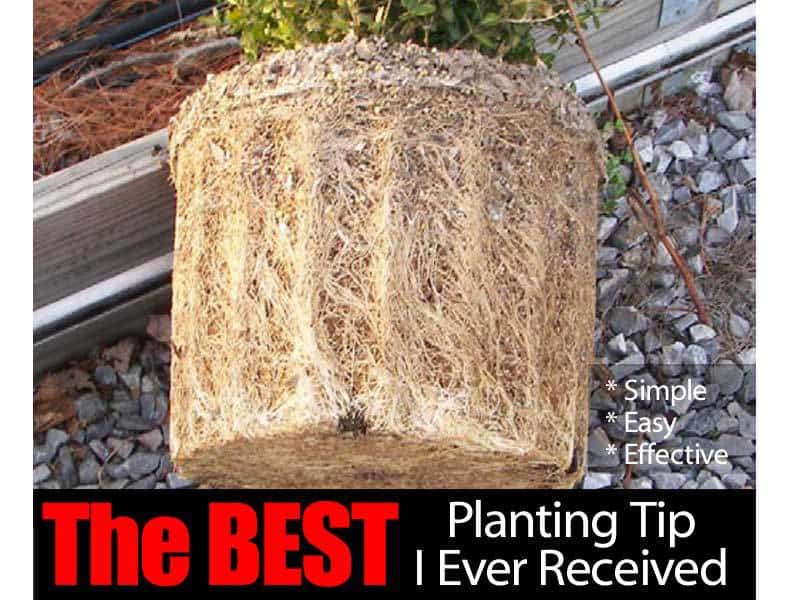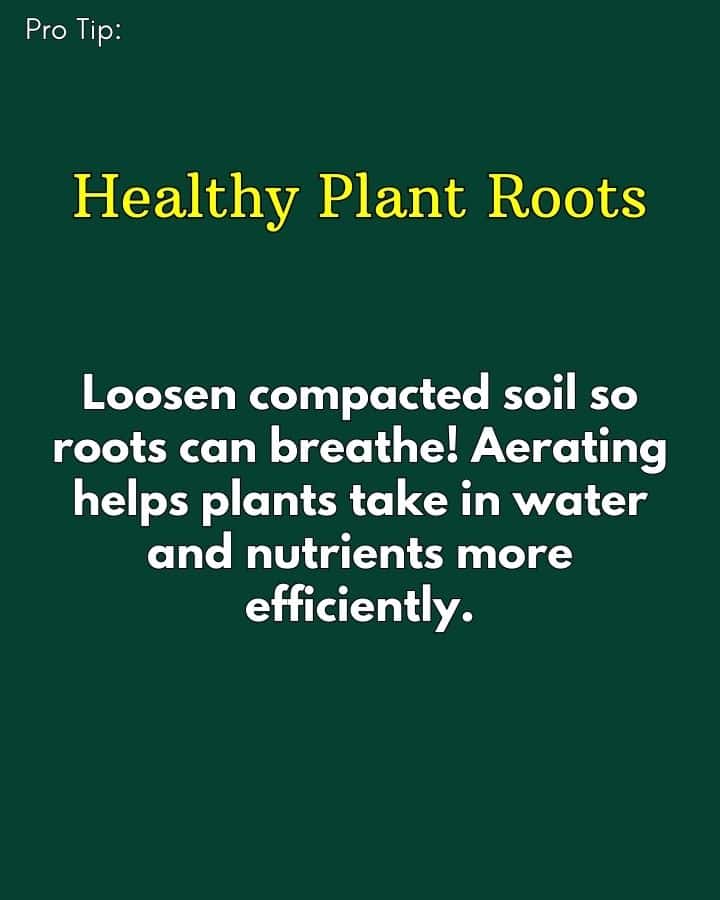A while back, we shared a useful tip that a lot of gardeners don’t know about. This simple trick can help reduce transplant shock and produce some great results with very little effort.

However, we’ve gotten a lot of requests for additional information about this little trick, so let’s go back and dig a little deeper.
The Best Planting Tip I Never Shared! (Until Now)
We didn’t go into great detail when we originally reported on the efficacy of soaking rootbound plants.

For example, this trick also works well on healthy plants that aren’t rootbound, and an alternate method with simple steps is available.
The Basics of Rootbound Plants
Plants use their healthy root system for a few different things, such as preventing them from falling over and gathering nutrients.
However, when growing plants in a pot, their roots only have so much room to spread about.
Eventually, the root system can be forced to turn back on itself in a tangled mess, making it increasingly hard for the plant to absorb water and nutrients. This hinders the healthy growth of plants.

Some of the tell-tale signs of having a rootbound plant include brown or yellow leaves, quick wilting, or stunted growth. You may also notice a few visible roots above the soil surface or along the container’s edges.
When repotting an extremely root-bound plant, a few options exist, such as dividing the plant (which removes the rootbinding issue and outer roots) or transplanting it to a bigger container or even to your garden.
However, if the roots are still bound when replanting, you could face dehydration.
Roots and Replanting
When you replant (or repot) a plant, the roots begin to feel their way around the soil or come out of the pot’s drainage holes.
Slowly, they’ll push their way through, spreading outwards and (for some) downwards.

The problem is that root-bound plants have trouble untangling themselves.
You can gently tease the roots apart to help rehabilitate the plant, but there’s a risk that severely root-bound plants will have another problem entirely: dehydration.
As mentioned before, when a plant becomes severely rootbound, it has trouble absorbing nutrients and water from the soil.
This can become a huge problem when replanting a rootbound specimen.

The roots will be unable to absorb water initially, and moisture will only slowly begin to work its way in from the outermost layer of tangled roots inwards over some time.
This not only means your plant will be more dehydrated, but the soil around it may absorb any moisture faster than the roots can, further increasing the problem.
Moreover, if you have acutely root-bound plants, you may gently divide the root balls by untangling the roots. After that, split the root ball into two or three sections using a clean, sharp knife, pruning shears, or gardening trowel.

Also, plant it in a new pot with fresh potting soil.
However, you can repot it in the current container if you have no larger containers. However, root pruning is also necessary to promote healthy new root growth and prevent the roots from clumping in a tight knot.
The Soaking Trick and Why It Works
And now we get to the planting tip we mentioned: soaking the roots.

Simply sit your heavily root-bound plant in a distilled or natural rainwater container for about 20 minutes.
The water will slowly absorb into the roots, causing them to loosen up and spread out in the planting hole, ensuring they won’t have an issue absorbing water when you first replant it.
If you plant in dry soil, the soil will soak up any excess water, eliminating the risk of root rot.
This sounds like such an easy trick, but it’s amazing how many people don’t know about it.

An Alternate Method for Non-Rootbound Plants
We would be amiss if we didn’t mention a second method you can use.
This method has similar results as the trick we just mentioned but works in reverse.
If your plant is severely rootbound, use the soaking trick (as this method won’t work on such plants effectively), but if the roots aren’t bound, you can use this method instead.
Dig your hole or put some soil in the bottom of a container and make a little mound in the middle for the plant to rest on so the top of the soil will be at the appropriate height.

Before planting, lightly dampen the soil in the hole or bottom of the pot, then sit the plant on top of the mound.
You don’t need a lot of water, just a little bit to get it slightly moist.
Gently add a little soil and tease the roots to ensure they’re nice and spread out.
Continue adding some soil and teasing the roots until you’ve completely covered the root system and the appropriate soil level.
Water the soil to give the plant a good drink.
Summing Up
Transplanting any plant is very stressful, and you want to ensure it recovers quickly. This goes for plants you purchase from local garden centers.
This is compounded when the plant is severely rootbound, and you’re unable to safely tease the roots apart.
Soaking the roots gives the plant a head start and can address its dehydration issue before it causes any major consequences.

Likewise, you can give plants that aren’t rootbound a head start by helping to spread the roots and giving them a moist “seat” or fresh soil as you fill in the hole or container.
While this is a very simple trick, that little bit of extra moisture will work wonders, and your plants will thank you for it.
